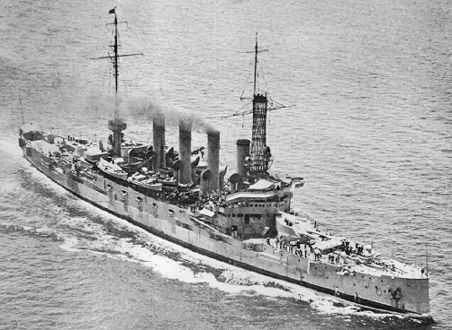
The fast burning, smoky propellants of the 1800s gave way to the slower burning "smokeless" powders near the turn of the century. These propellants gasified almost completely and could accelerate a projectile all the way along a gun barrel of 40 or more calibers long. Thus the high-velocity naval gun was born. A side benefit was the flatter trajectory, leading to more accurate firing which in turn led to centralized fire control.
In the case of the USN, the development of smokeless powder led to a new generation of long-barrel naval guns, including the 10"/40 (25.4 cm) Mark 3. This weapon was one of the post Spanish-American War high-powered guns and armed the USN's last generation of armored cruisers. This was the last 10" (25.4 cm) gun built for the US Navy.
In 1908 AP projectiles were fitted with a longer ballistic cap of 7crh which improved their penetration ability at longer ranges.
Consisted of A tube, jacket, four hoops, locking ring and a screw box liner, all manufactured from nickel-steel. These guns used the Fletcher breech mechanism with Welin breech plugs.
| Designation | 10"/40 (25.4 cm) Mark 3 |
|---|---|
| Ship Class Used On | Tennessee (ACR-10) Class |
| Date Of Design | 1904 |
| Date In Service | 1906 |
| Gun Weight | 74,836 lbs. (52,834 kg) (including breech)
79,500 lbs. (52,145 kg) (without breech) |
| Gun Length oa | 413 in (10.490 m) |
| Bore Length | 400 in (10.160 m) |
| Rifling Length | N/A |
| Grooves | N/A |
| Lands | N/A |
| Twist | Uniform RH 1 in 25 |
| Chamber Volume | N/A |
| Rate Of Fire | 2 - 3 rounds per minute |
| Type | Bag |
| Projectile Types and Weights | AP - 510 lbs. (231.3 kg)
Common - 510 lbs. (231.3 kg) |
| Bursting Charge | AP - 13.0 to 13.25 lbs. (5.9 to 6.0 kg) Black Powder and later Explosive D 1 Common - 20.0 lbs. (9.1 kg) Black Powder |
| Projectile Length | N/A |
| Propellant Charge | 200 lbs. (90.7) SPD 2 |
| Muzzle Velocity | 2,700 fps (823 mps) 3 |
| Working Pressure | 16.0 tons/in2 (2,520 kg/cm2) |
| Approximate Barrel Life | N/A |
| Ammunition Stowage per gun 4 | 60 rounds |
- ^Experiments were made with Picric Acid during the early 1900s but it is not known if this was in service use.
- ^As commissioned, these ships used a 207.5 lbs. (94.1 kg) SP charge.
- ^As commissioned, these ships had an MV of 2,800 fps. (853 mps). this was reduced to the above figure to improve barrel life.
- ^Wartime stowage was 72 rounds per gun.
| Elevation | Range | Angle of Fall | Time of Flight | Striking Velocity | Maximum Ordinate |
|---|---|---|---|---|---|
| 5.17 degrees | 10,000 yards (9,140 m) | 6.90 degrees | 13.93 seconds | 1,748 fps (533 mps) | 784 feet (239 m) |
| 5.88 degrees | 11,000 yards (10,058 m) | 8.08 degrees | 15.69 seconds | 1,676 fps (511 mps) | 997 feet (304 m) |
| 6.25 degrees | 11,500 yards (10,516 m) | 8.70 degrees | 16.61 seconds | 1,642 fps (500 mps) | 1,117 feet (340 m) |
| 14.5 degrees | 20,000 yards (18,290 m) | N/A | N/A | N/A | N/A |
- ^Values for AP from "Range and Ballistic Tables 1935".
| Range | Side Armor | Deck Armor |
|---|---|---|
| 6,000 yards (5,490 m) | 10.74" (273 mm) | --- |
| 9,000 yards (8,230 m) | 8.21" (209 mm) | --- |
| 12,000 yards (10,920 m) | 6.78" (172 mm) | --- |
This data is from "Ordnance Data Sheets" of 1905 as published in "US Naval Weapons" and is for face-hardened Harvey plates. Data is for the older shell design.
| Range | Side Armor | Deck Armor |
|---|---|---|
| 6,000 yards (5,490 m) | 12.1" (307 mm) | --- |
| 9,000 yards (8,230 m) | 9.8" (249 mm) | --- |
| 12,000 yards (10,920 m) | 7.8" (198 mm) | --- |
This data is "Elements of US Naval Guns" of 1918 as published in "US Naval Weapons" and is for the 7crh projectile. Data is corrected for angle of fall and may also refer to harder armor than used for the 1905 data.
| Designation | Two-gun Turrets
Tennessee (2): Mark 6 (?) |
|---|---|
| Weight | 275 tons (279 mt) |
| Elevation | -3 / +14 degrees |
| Rate of Elevation | N/A |
| Train | about -150 / +150 degrees |
| Rate of Train | N/A |
| Gun Recoil | N/A |
| Loading Angle | Any elevation |
- Each gun was provided with a electric hoist that delivered two complete rounds per minute. Automatic shutters were fitted in the ammunition supply tubes between the turret and magazines in order to increase flash protection.
- Handling rooms were equipped with a tracked trolley system that helped in moving rounds to the hoists.
- Turrets had a longitudinal bulkhead separating the guns and a turret officer booth.
- These turrets used the "grass-hopper" counter recoil system whereby a spring box, located under the gun pit, was connected via two heavy, pivoted arms to the gun yoke. See sketch below.
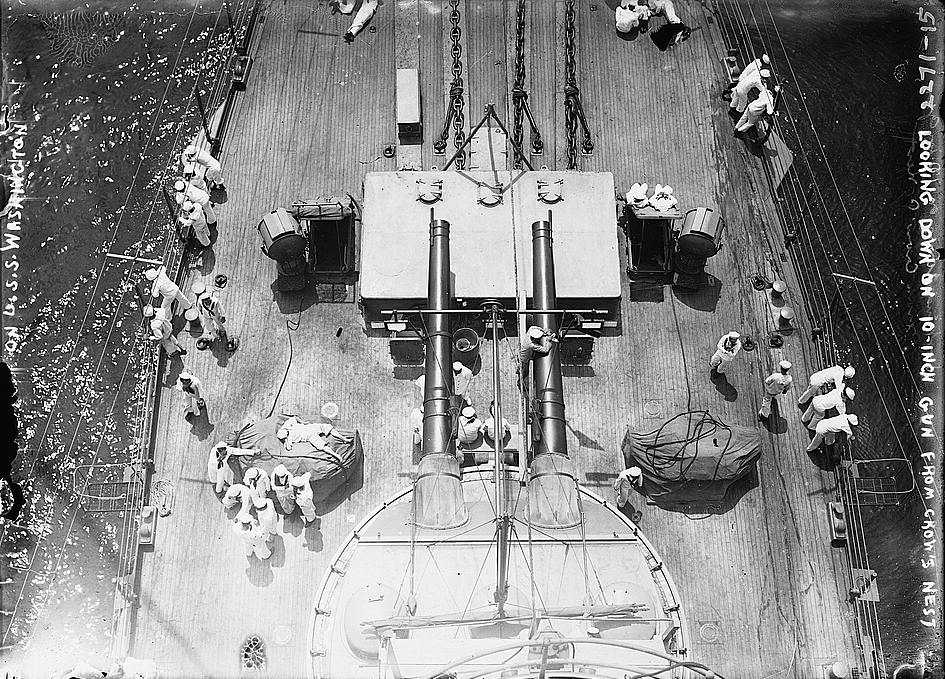
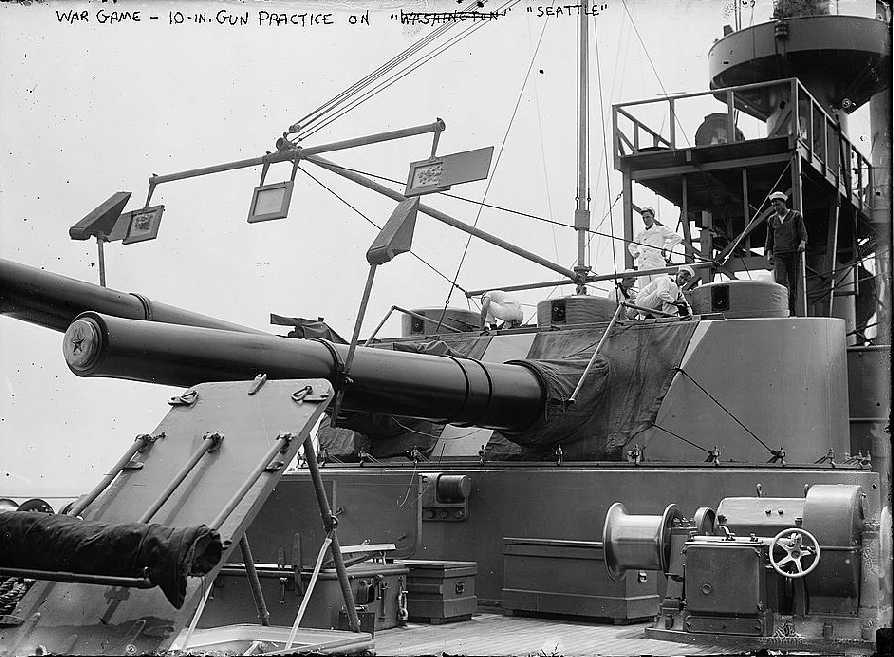

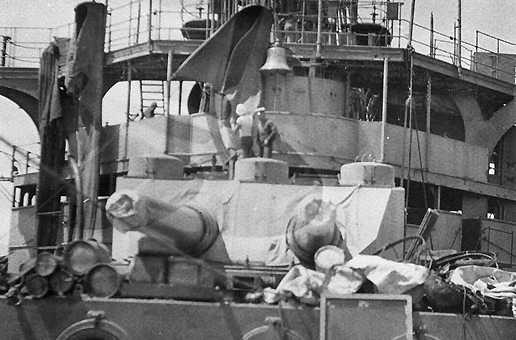
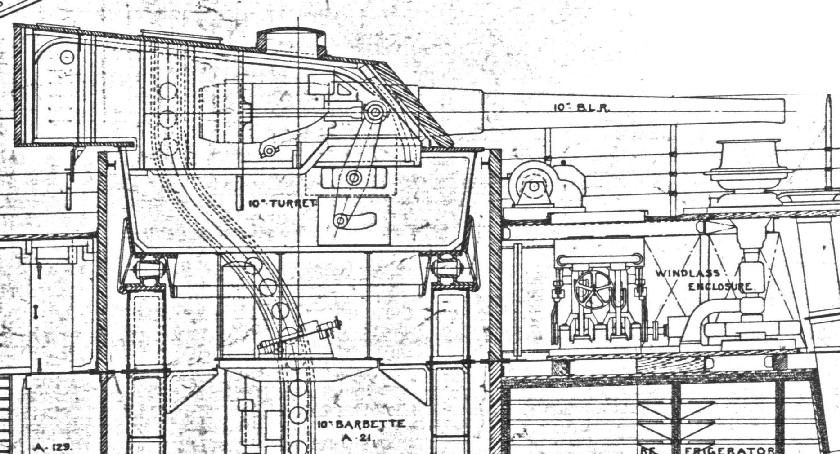
"U.S. Cruisers: An Illustrated Design History" and "US Naval Weapons" both by Norman Friedman
"U.S. Armored Cruisers: A Design and Operational History" by Ivan Musicant
---
"Ordnance and Gunnery, A Text-book Prepared for the Use of the Midshipmen of the United States Naval Academy" by Officers of the U.S. Navy (1910)
"Naval Ordnance - A Text Book" revised in 1915 by Lt. Cmdr. Roland I. Curtain and Lt. Cmdr. Thomas L. Johnson
"Range and Ballistic Tables 1935" by Department of Ordnance and Gunnery, U.S. Naval Academy
"United States Naval Guns: Their Marks and Modifications - Ordnance Pamphlet No. 127 - December 1916, Second Revision June 1924" by Bureau of Ordnance (BuOrd), Department of the Navy
---
Gene Slover's Navy Pages
---
Special help from Wesley F. Moore
26 December 2008 - Benchmark
25 July 2016 - Converted to HTML 5 format
04 October 2018 - Reorganized notes
23 October 2020 - Added ammunition data
27 March 2023 - Changed caption for dotter drill
21 June 2023 - Added comment about Fletcher breech mechanism
09 August 2023 - Revised range tables
